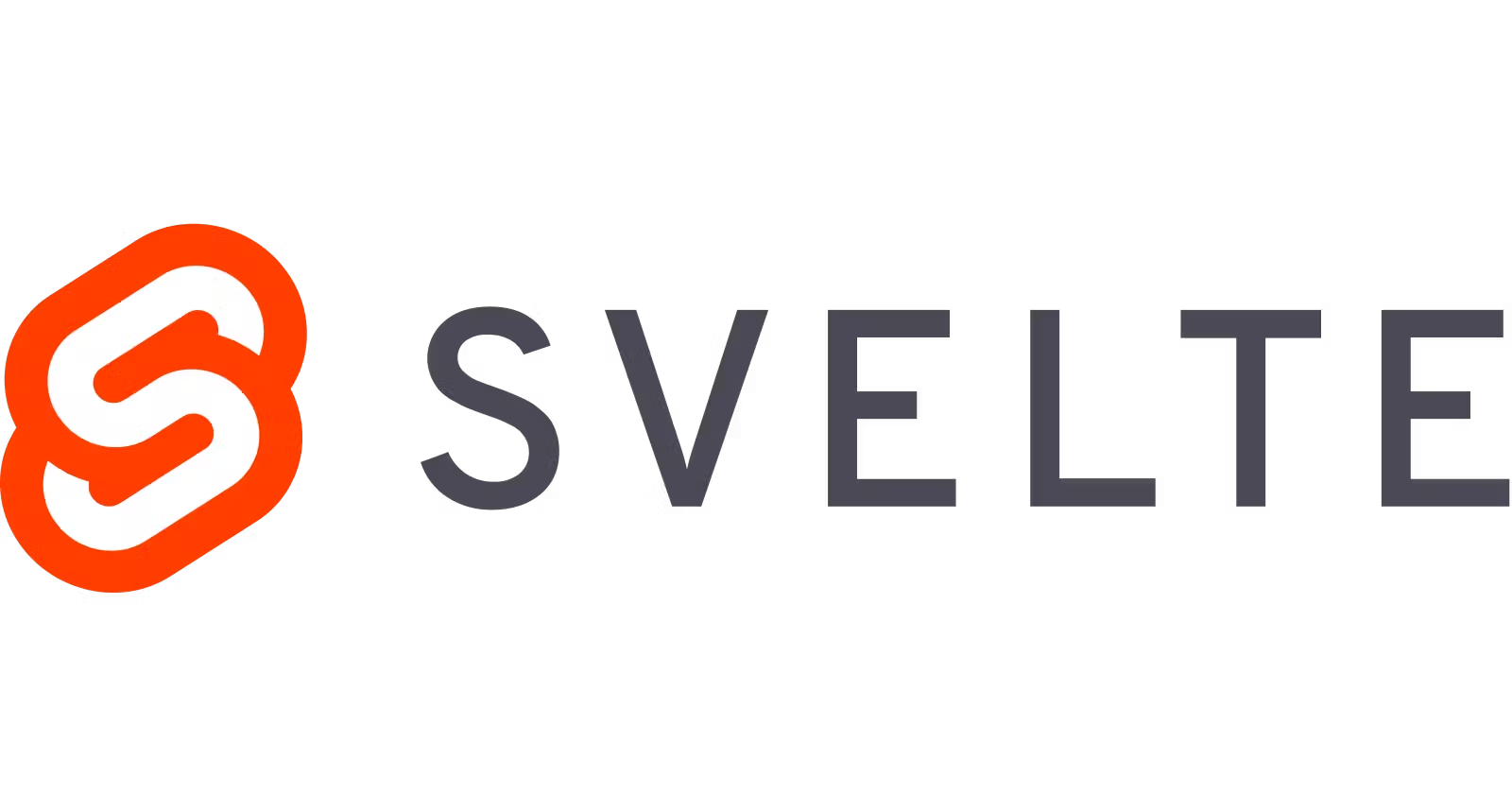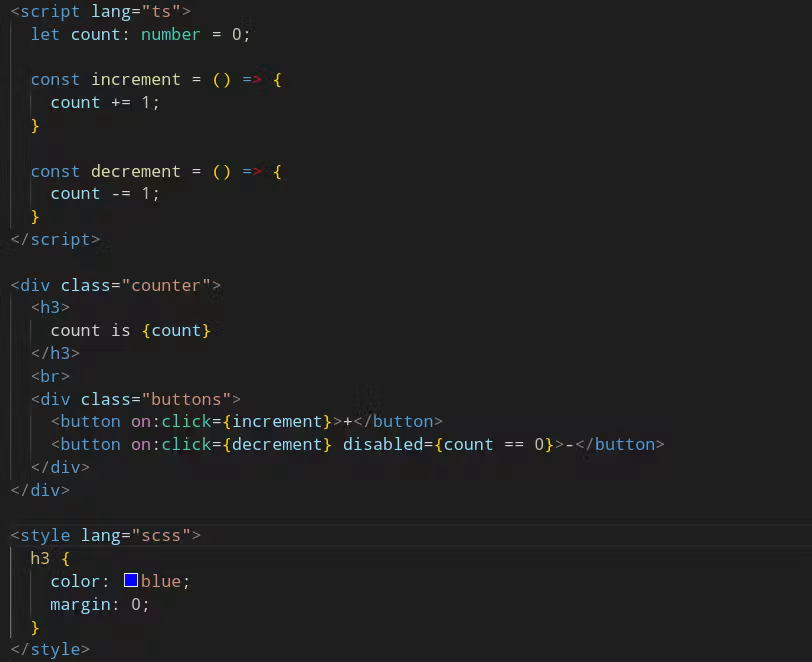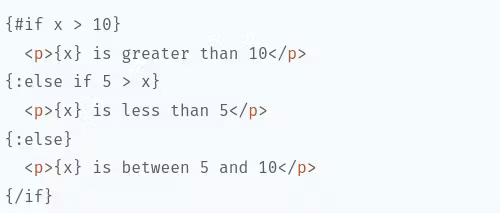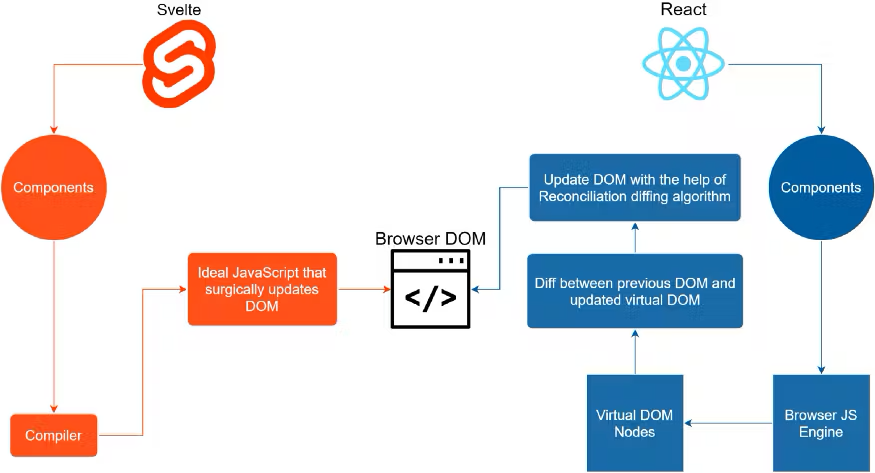Is Svelte the best way to build UI?
2024-06-02

When it comes to frontend js frameworks Svelte doesn't have a community as huge as React or Angular. That doesn't make it any inferior to any other
framework. I think Svelte is the best way to build UIs (Enjoyable too).
Let's see why I think so…
Svelte Files
To make a UI that works on the web, we need HTML, CSS and JS but no one likes to do that normally that's too vanilla. So we have frameworks that make this work less pain in the carpel tunnel. React uses JSX files to make UIs which is a hybrid of HTML and JS. HTML can be written in JS files and angular takes a different approach by injecting JS in HTML files. In both cases, writing and maintaining CSS is hard (What's really hard is coming up with class names for CSS selectors).
Svelte has its own files with the extension .svelte and in that we can write HTML, JS and CSS in one single file and styles here are truly scoped,
which means styles written will be applied only for that component. Not just that one can opt to use TS just by adding an attribute lang="ts" also
styles can be written in SCSS by including lang="scss" and adding a SASS plugin. You know what 'A' stands for in SASS…. yeah! Awesome.

Conditions and Loops
I'm not gonna talk about conditions and loops in JS. Let's look at how svelte does conditional rendering and rendering a template multiple times. HTML in a svelte file has extended syntax that gives it more power to handle stuff like this.


States, Props, Store and more…
Having reactive states is really important in a UI. You can achieve that in react in several ways. The most famous way is to use a useState hook.
It is still hard to maintain states across the application. That's why we have state management tools like redux and react query.
Handling these is pretty easy in svelte… initialize a variable with let keyword, and it becomes a reactive state. we can use export keyword to
define props and send data to a child component. We have a svelte Context API that stores data in key, value pairs and once defined in a component
all the child components can access the data. Svelte also provides a way to utilise global states using stores concept where data in object form
acts like an observable and any component can subscribe to it and get notified when the data changes.
Runtime
Frameworks like React or Angular ship their runtimes to the browsers to make the code work.
Svelte doesn't have to ship a runtime instead it loads JS files that can directly run on the browser. It converts our svelte files into plain JS files using a compiler. we will look at it later.
Virtual DOM vs Real DOM
DOM means Document Object Model which is a programming API for HTML documents. Most of the frameworks like react use Virtual DOM. Virtual DOM is nothing but a representation of UI that can be updated quickly when changes are made and can be synced with Real DOM at intervals.
Svelte operates on Real DOM. The svelte compiler generated pure JS code that can make updates to Real DOM and we can save time and memory on shipping Virtual DOM to the browser.

Svelte Compiler
Svelte Compiler takes the svelte code and converts it into pure JS that can run directly on Browser APIs. Svelte uses Vite to build a tool that is blazingly fast since it uses Rollup for production builds. Whereas React or Angular uses webpack to bundle code and dependencies.
Since we are generating code that runs directly on the browser, we don't need any runtimes or virtual DOMs. So we get highly performant code in a very small package. Load times are really low in svelte applications.
SvelteKit and Sapper
After all Svelte is more of a compiler and not even close to a full-blown framework. To get features like code splitting, server-side rendering and page-based routing, we can use svelte-based frameworks like SvelteKit and Sapper.
Conclusion
Even though Svelte has all these awesome new features, it doesn't have thriving community support when compared to react. Svelte is gaining traction and becoming a strong contender in the frontend framework landscape.
But it is worth giving it a try at least for your side projects.